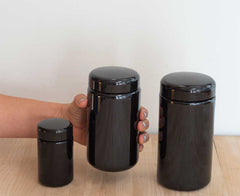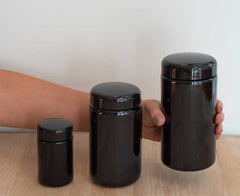Research Database
The only comprehensive database for clinical and medical research papers on the healthy benefits of matcha/green tea.
Explore Research Topic

Cognitive Function
Matcha consumption leads to much higher intake of green tea phytochemicals compared to regular green tea. Previous research on caffeine, L-theanine, and epigallocatechin gallate (EGCG) repeatedly demonstrated benefits on cognitive performance.
Learn More
Heart Health
According to Harvard Medical School, “lowering your risk of cardiovascular disease may be as easy as drinking green tea. Studies suggest this light, aromatic tea may lower LDL cholesterol and triglycerides, which may be responsible for the tea's association with reduced risk of death from heart disease and stroke.”
Learn More
Mental Health
Matcha contains an amino acid called L-theanine, which has been shown to reduce physiological and psychological stresses. L-theanine also improves cognition and mood in a synergistic manner with caffeine, and promotes alpha wave production in the brain
Learn More
Cancer Prevention
Matcha/green tea has for many centuries been regarded as an essential part of good health in Japan and China. Many believe it can help reduce the risk of cancer, and a growing body of evidence backs this up.
Learn More
Immunity
A recent study in the journal Proceedings of the National Academy of Sciences concluded that drinking matcha daily greatly enhanced the overall response of the immune system. The exceedingly high levels of antioxidants in matcha mainly take the form of polyphenols, catechins, and flavonoids, each of which aids the body’s defense in its daily struggles against free radicals that come from the pollution in your air, water and foods.
Learn MoreMost Recent Research Articles
Author: Ecem Evrim Çelik and Vural Gökmen
This work investigates the possibility of interaction between insoluble dietary fiber bound antioxidants, specifically of wheat bran, and soluble antioxidants like those provide by aqueous infusions of green tea. Solutions of pure catechins were also assayed for comparison with those naturally found in tea. To accomplish this, the aqueous and alcohol soluble fractions as well as the lipid components of wheat bran were firstly removed and the freeze-dried insoluble residue was then treated with different concentrations of green tea infusions or aqueous solutions of epicatechin (EC) and epigallocatechin-3-gallate (EGCG) for certain time. Treatment with EC (0–200 μM) had no significant effect on the antioxidant capacity of insoluble bran fraction. However, treatment with EGCG significantly (p < 0.05) increased linearly the antioxidant capacity as a function of concentration (0–100 μM). Treatment with great tea infusions (1–3 g/100 ml) also increased the resulting antioxidant capacity of insoluble bran fraction, but the effect was lesser at higher infusion concentrations. Liquid chromatography couple to mass spectrometry (LC–MS) analyses of aqueous phases after treatment indicated comparable levels of decrease in the concentrations of catechins confirming their reaction with the radical forms of antioxidants bound to insoluble bran matrix.
Author: Mike H. Pillukat and Carolin Bester and Andreas Hensel and Matthias Lechtenberg and Frank Petereit and Susanne Beckebaum and Klaus-Michael Müller and Hartmut H.J. Schmidt
Etnopharmacological Relevance: The popularity of concentrated green tea extracts as dietary supplements for a wide range of applications is increasing due to their health-promoting effects attributed to the high amounts of catechins they contain. The most important of the green tea catechins is (−)-epigallocatechin-3-O-gallate (EGCG). While their beneficiary effects have been studied extensively, a small number of adverse events have been reported in the medical literature. Here we present a typical reversible course of severe hepatitis after green tea consumption. Materials and methods The case study describes in a 63-year old woman during treatment with green tea-capsules upon recommendation of a cancer support group. Results The histological finding was consistent with drug induced hepatitis, and other possible causes of hepatitis were excluded. According to the CIOMS/RUCAM score the causality was assessed as “probable”. After discontinuation of medication, followed by extracorporal albumin dialysis, rapid and sustained recovery occurred. Pharmaceutically analysis (HPLC) of the green tea capsules did not give evidence for contaminants but revealed the two typical compounds of green tea, namely (−)-epigallocatechin-3-O-gallate (EGCG, 93.2%) and epicatechin (EC, 6.8%) at a very high dose level. Conclusion The present case highlights the fact that such concentrated herbal extracts from green tea may not be free of adverse effects under certain circumstances. There is still a lack of a uniform European Union-wide surveillance system for adverse drug reactions of herbal products. Therefore this case underlines the importance of public awareness in the potential risks in use of herbal products.
Author: Keiko Narumi and Jun-Ichiro Sonoda and Keita Shiotani and Michihiro Shigeru and Masayuki Shibata and Akio Kawachi and Erisa Tomishige and Keizo Sato and Toshiro Motoya
We developed an analytical method for the simultaneous determination of tea catechins and gallic acid (GA) in human serum using ion-pair high-performance liquid chromatography (HPLC) with electrochemical detection. GA was measured to estimate the amount of gallate moiety produced by degradation of gallated catechins ((−)-epicatechin-3-gallate, ECG; (−)-epigallocatechin-3-gallate, EGCG). Ethyl gallate was adopted as an internal standard to correct for the extraction efficiency. To maximize extraction efficiency, a hydrophobic polytetrafluoroethylene (PTFE) filter was selected for pre-treatment prior to separation. HPLC separation was performed using a C18 reversed-phase column with a gradient mobile phase of phosphate buffer (pH 2.5) containing tetrahexylammonium hydrogensulfate as an ion-pair reagent. Using this method, (−)-epicatechin (EC), (−)-epigallocatechin (EGC), ECG, EGCG, ethyl gallate, and GA were detected as single peaks. The resolution values for target analytes were 4.0–13.0 and the mean values of the absolute recoveries of catechins and GA were 77.3–93.9%. The detection limits for catechins and GA in serum were 0.4–3.1 ng/mL. The serum catechin levels of eight healthy volunteers after ingestion of a single dose of green tea tablets were measured using this method. The concentration of total catechins (free + conjugated forms) in serum peaked 60 min after ingestion. From these results, this method is thought to enable the simultaneous quantification of GA, the hydrolysis product of gallated catechins, and target catechins, and to be sufficiently sensitive for pharmacokinetic studies of catechins following oral administration of green tea.
Author: Hae-Suk Kim and Michael J. Quon and Jeong-a Kim
Green tea is rich in polyphenol flavonoids including catechins. Epigallocatechin 3-gallate (EGCG) is the most abundant and potent green tea catechin. EGCG has been extensively studied for its beneficial health effects as a nutriceutical agent. Based upon its chemical structure, EGCG is often classified as an antioxidant. However, treatment of cells with EGCG results in production of hydrogen peroxide and hydroxyl radicals in the presence of Fe (III). Thus, EGCG functions as a pro-oxidant in some cellular contexts. Recent investigations have revealed many other direct actions of EGCG that are independent from anti-oxidative mechanisms. In this review, we discuss these novel molecular mechanisms of action for EGCG. In particular, EGCG directly interacts with proteins and phospholipids in the plasma membrane and regulates signal transduction pathways, transcription factors, DNA methylation, mitochondrial function, and autophagy to exert many of its beneficial biological actions.
Authors: Noelia López-Gutiérrez and Roberto Romero-González and Patricia Plaza-Bolaños and José Luis Martínez Vidal and Antonia Garrido Frenich
A method has been developed and validated for the simultaneous detection and quantification of phytochemicals in nutraceutical products obtained from green tea. For that purpose, ultra-high performance liquid chromatography coupled to single-stage Orbitrap high resolution mass spectrometry (UHPLC–Orbitrap-MS) has been used. A database containing 37 compounds has been used for the detection and identification of the target compounds. The developed methodology was based on solid–liquid extraction, using a mixture of methanol:H2O (80:20, v/v, pH 4), followed by dilution (10 times) with a mixture of ammonium acetate:methanol (50:50, v/v). Chromatographic conditions were optimised and full scan accurate mass data acquisition using electrospray ionisation in positive and negative ion mode was used. Moreover, all-ion fragmentation mode was used to get information of fragment ions, and they were used for identification purposes. The developed method was validated, obtaining repeatability (intra-day) and inter-day precision values (expressed as relative standard deviation, RSD) lower than 16% and 20%, respectively. Lower limits were also evaluated and limits of detection (LODs) ranged from 1 to 50 μg L−1, while limits of quantification (LOQs) ranged from 2 to 150 μg L−1. Recovery was performed at five levels and it ranged from 70% to 109%. Finally, this method was used to evaluate the phytochemical content in 10 samples (tablets or capsules), showing concentrations of (+)-catechin, (−)-epicatechin, gallic acid, (−)-gallocatechin and quercetin-3-O-rutinoside, ranging from 258 (C6) to 10,729 (C6) mg kg−1.
Authors: Jang-Eun Lee and Bum-Jin Lee and Jin-Oh Chung and Hak-Nam Kim and Eun-Hee Kim and Sungheuk Jung and Hyosang Lee and Sang-Jun Lee and Young-Shick Hong
Numerous factors such as geographical origin, cultivar, climate, cultural practices, and manufacturing processes influence the chemical compositions of tea, in the same way as growing conditions and grape variety affect wine quality. However, the relationships between these factors and tea chemical compositions are not well understood. In this study, a new approach for non-targeted or global analysis, i.e., metabolomics, which is highly reproducible and statistically effective in analysing a diverse range of compounds, was used to better understand the metabolome of Camellia sinensis and determine the influence of environmental factors, including geography, climate, and cultural practices, on tea-making. We found a strong correlation between environmental factors and the metabolome of green, white, and oolong teas from China, Japan, and South Korea. In particular, multivariate statistical analysis revealed strong inter-country and inter-city relationships in the levels of theanine and catechin derivatives found in green and white teas. This information might be useful for assessing tea quality or producing distinct tea products across different locations, and highlights simultaneous identification of diverse tea metabolites through an NMR-based metabolomics approach.



